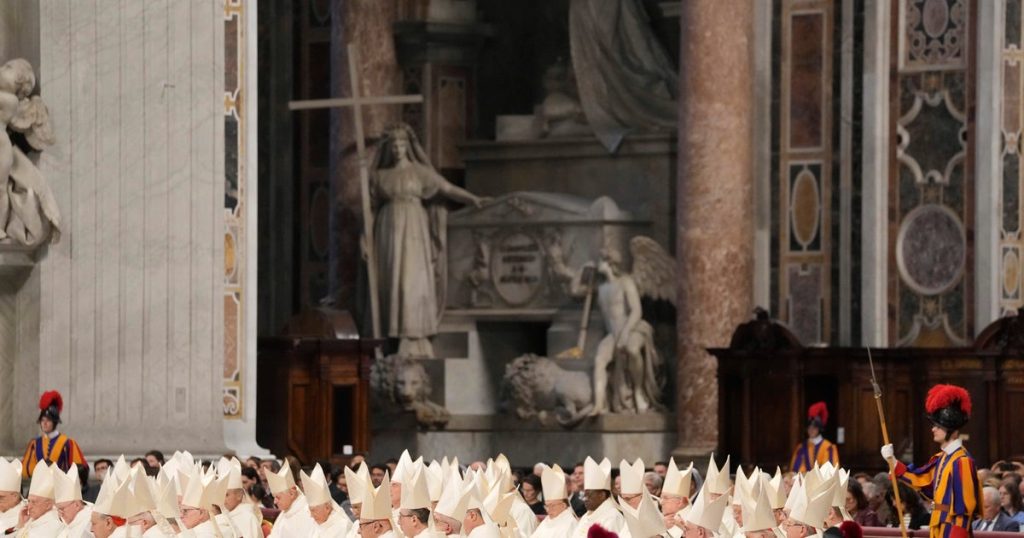On Sunday, the Catholic Church concluded a formal mourning period for Pope Francis, who passed away on April 21, following a 12-year papacy. His death at the age of 88 initiated a traditional nine-day mourning ritual known as Novemdiales, which began with his funeral at St. Peter’s Square in the Vatican. The final mass of this mourning period was celebrated by Cardinal Dominique Mamberti, attended by a significant number of cardinals and laypeople, all gathered to honor the legacy of Francis.
| Article Subheadings |
|---|
| 1) The Meaning of Novemdiales |
| 2) The Role of Cardinal Mamberti |
| 3) Reflecting on Pope Francis’ Health Issues |
| 4) The Significance of the Conclave |
| 5) Looking Ahead: Qualities for the Next Pope |
The Meaning of Novemdiales
Novemdiales, derived from the Latin word for “nine days,” represents a period dedicated to mourning the deceased. This ancient tradition is deeply rooted in Catholicism, providing the faithful with an opportunity to honor and reflect on the life of the departed leader. The mourning rituals included daily masses, each overseen by a different cardinal, thereby allowing members of the clergy and the public to gather in collective remembrance of Pope Francis. The significance of this practice lies not only in the prayers offered but also in the sense of unity and shared grief among the congregation.
The Role of Cardinal Mamberti
During the final mass of Novemdiales, Cardinal Dominique Mamberti presided over the ceremony, addressing the gathered crowd and leading them in a heartfelt homily. Mamberti, a senior deacon and influential figure within the College of Cardinals, has played a crucial role in guiding the future of the Church. His remarks highlighted Pope Francis’ dedication and the challenges the Church faced under his leadership. The solemn mass, attended by hundreds of clergy and laypeople alike, included hymns performed by a choir and personal reflections shared at the altar. The sense of shared loss resonated through the cathedral, tying together the traditions of the past with the Church’s future.
Reflecting on Pope Francis’ Health Issues
Pope Francis’ health has been a topic of concern in recent years, significantly affecting his ability to lead. Following a stroke on Easter Monday, which led to a postoperative coma and heart failure, he passed away. Prior to this tragic event, the pontiff had undergone two abdominal surgeries and had battled respiratory infections, undergoing hospitalization for severe bronchitis and pneumonia several weeks earlier. His struggles with health not only impacted his physical capabilities but also brought to light the human fragility faced by leaders within the Church. Such health challenges endured by Francis reflect a broader narrative of the importance of caring for rigorous duties that come with leading a global religious community.
The Significance of the Conclave
In the wake of Novemdiales, the Cardinals will soon gather for a conclave set to commence on May 7. This ancient ritual will serve the purpose of electing the successor to Pope Francis. It involves a group of approximately 135 cardinal electors, who will sequester themselves in the Vatican and engage in a series of votes to determine the next leader of the Catholic Church. The conclave, held in the iconic Sistine Chapel, follows a carefully structured process, where each cardinal casts votes until a candidate secures the necessary two-thirds majority. This event not only represents a pivotal moment for the Church but also underscores the importance of leadership continuity following the loss of a beloved pontiff.
Looking Ahead: Qualities for the Next Pope
As the conclave approaches, discussions about the qualities needed in the next pope have begun to surface among cardinals. Timothy Cardinal Dolan, the Archbishop of New York, emphasized the importance of finding a leader who embodies the teachings and humility of Jesus Christ. Referring to the profound impact Pope Francis had on the Cardinals when he first addressed them, Cardinal Dolan noted that the incoming pope must be someone who speaks with compassion and wisdom. Recognizing the challenges the Church faces today, the Cardinal expressed hope for a leader who can navigate these complexities while remaining true to the Church’s mission of service and love. The quest for a new papal leader not only raises questions about tradition and continuity but also invites a re-evaluation of how the Church addresses contemporary challenges.
| No. | Key Points |
|---|---|
| 1 | Pope Francis’ death initiated a nine-day mourning period called Novemdiales. |
| 2 | Cardinal Dominique Mamberti presided over the final mass attended by cardinals and laypeople. |
| 3 | The pontiff faced significant health challenges leading up to his death. |
| 4 | The conclave to elect the next pope will begin shortly after the mourning period. |
| 5 | Cardinals are discussing the qualities needed in the next pope as the conclave approaches. |
Summary
The death of Pope Francis marked a significant moment in the history of the Catholic Church, leaving behind a legacy of challenging established norms and promoting an inclusive vision. The conclusion of the mourning period with Novemdiales served not only to honor his memory but to foster a sense of unity within the Church as it looks toward the future. As the conclave approaches, the qualities sought in the next pope resonate with the values exemplified by Francis, ensuring that the Church continues to engage with contemporary moral and spiritual challenges in meaningful ways.
Frequently Asked Questions
Question: What is Novemdiales?
Novemdiales is a nine-day mourning period in the Catholic Church that follows the death of a pope, allowing believers to honor and reflect on the life of the deceased leader.
Question: Who presided over the final mass of Novemdiales?
Cardinal Dominique Mamberti led the final mass, which was attended by various cardinals and laypeople at St. Peter’s Basilica.
Question: When will the conclave to elect the next pope begin?
The conclave will officially begin on May 7, following the conclusion of the Novemdiales mourning period.


